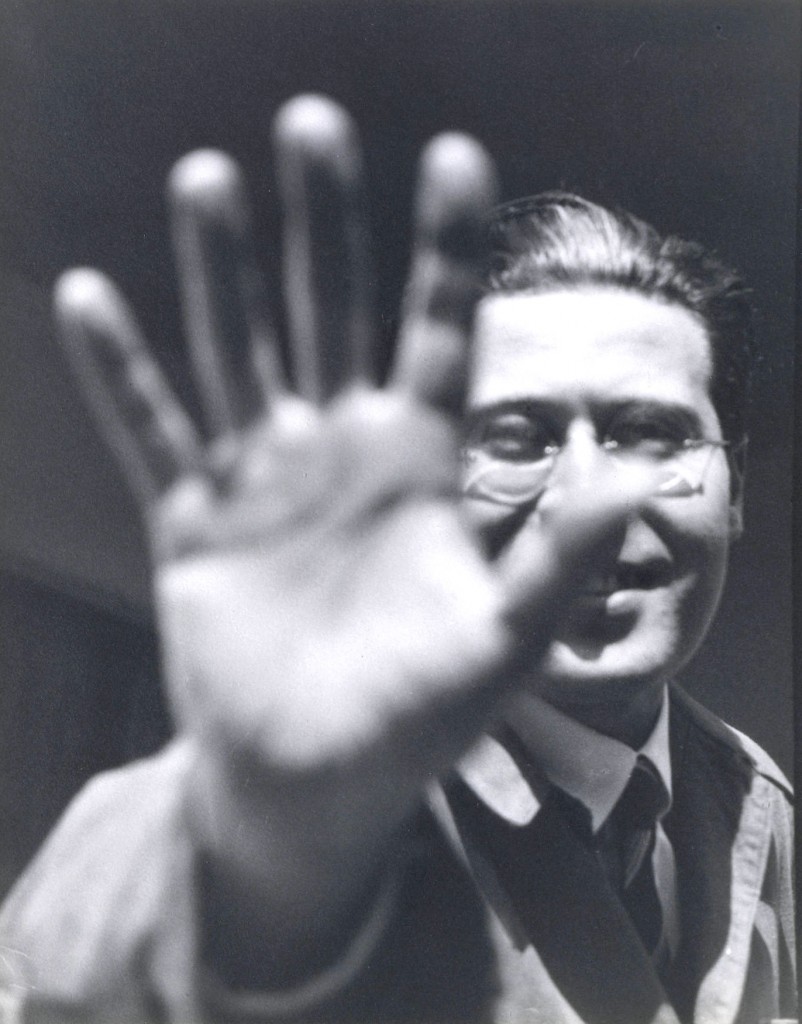
László Moholy-Nagy was an important person in my father’s life. Moholy-Nagy or just Moholy as he often called, was one of the key figures of the Bauhaus Movement and School, founded by German architect Walter Gropius. The Bauhaus ideal was to foster a culture in which ordinary, everyday utilitarian objects, buidings, furniture, textiles, utensils were designed with both beauty and functionality in mind. In fact, true beauty often derived from function. In 1919, in his Proclamation of Bauhaus, Gropius wrote:
PROCLAMATION OF BAUHAUS (Excerpt)
Let us then create a new guild of craftsmen without the class distinctions that raise an arrogant barrier between craftsman and artist! Together let us desire, conceive, and create the new structure of the future, which will embrace architecture and sculpture and painting in one unity and which will one day rise toward heaven from the hands of a million workers like the crystal symbol of a new faith.

The Bauhaus manifesto rejected the idea of art as something that could only be appreciated by a social elite. Rather it should be manifest in all material aspects of everyday life; art and architecture for the people. Even the approach to teaching at the Bauhaus school was revolutionary for its time. Moholy, who taught the school’s foundation course between 1923 and 1928 and who also ran the metal shop, wrote that his goal in the classroom was “to keep, in the work of the grown-up, the sincerity of emotion, the truth of observation, the fantasy, and the creativeness of the child.”

Pali Weidlinger’s life intersected with Moholy’s in 1937. My father had just graduated with a degree in architecture and engineering from the Swiss Polytechnic Institute in Zurich but jobs were non-existent in the depths of the worldwide depression. Hoping to use an alleged family connection to get a job from the film producer, Alexander Korda, Paul went to London. But by the time he got to England Korda was bankrupt.
Things looked grim. Paul was reduced to eating one meal a day – the large breakfast provided by the boarding house where he was staying. Click on the VIDEO to listen to Paul’s own account of what happened next.
Paul soon changed his mind about the merits of immigrating to the United States, but that’s another story. The salient fact is that Moholy had been a mentor to him. It is possible to see, in some of Paul’s early sketches, the influence of Moholy and the Bauhaus aesthetic.


Paul also wrote a long rambling definition on Beauty in art and architecture that closely echoes the Bauhaus proclamation. On a personal note he wrote to his cousin Ilona Radó in Budapest, giving his impression of Moholy .
I am starting to again hope. Moholy is so unbelievably kind. I really like working for him, although his studio is a madhouse. It is full of fantastic pictures, and models. Moholy himself puts his sentences together in three languages: Hungarian, German, and English, and so it is very difficult to understand his complicated thought processes. Despite this, I consider him an exceptionally smart person. What is truly unique: He is also exceptionally honest. I am only now beginning to see how well known he is. He just had an exhibit of his paintings in London and one at the constructivists’ exhibit in Basel. Just yesterday, he was invited to give a lecture in Oxford. Meanwhile, he makes films, designs posters and exhibits, and works on his inventions.
micha
February 1, 2019 at 12:10 amJust a quick shout out to my home city, which has the largest cluster of Bauhaus houses still standing in the world. Tel Aviv’s “White City” is a UNESCO World Heritage Site. The Restless Hungarian has indeed knocked around Many countries, let’s add Israel to this account.